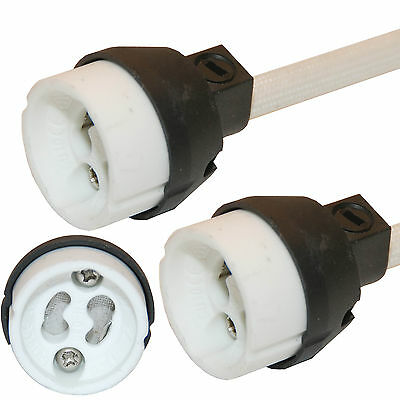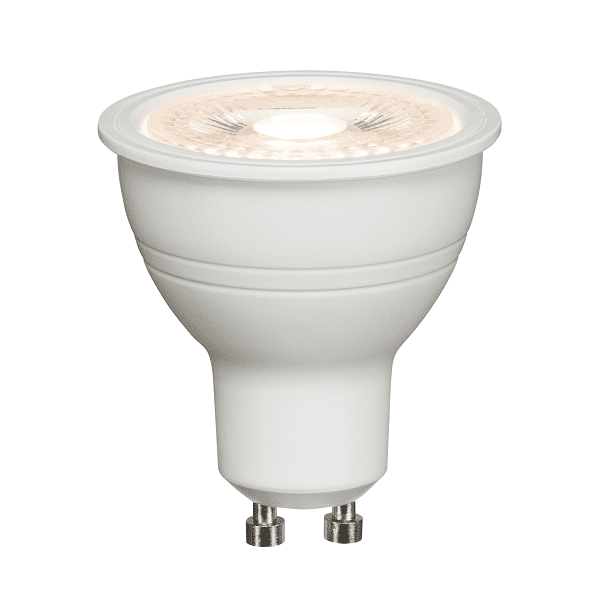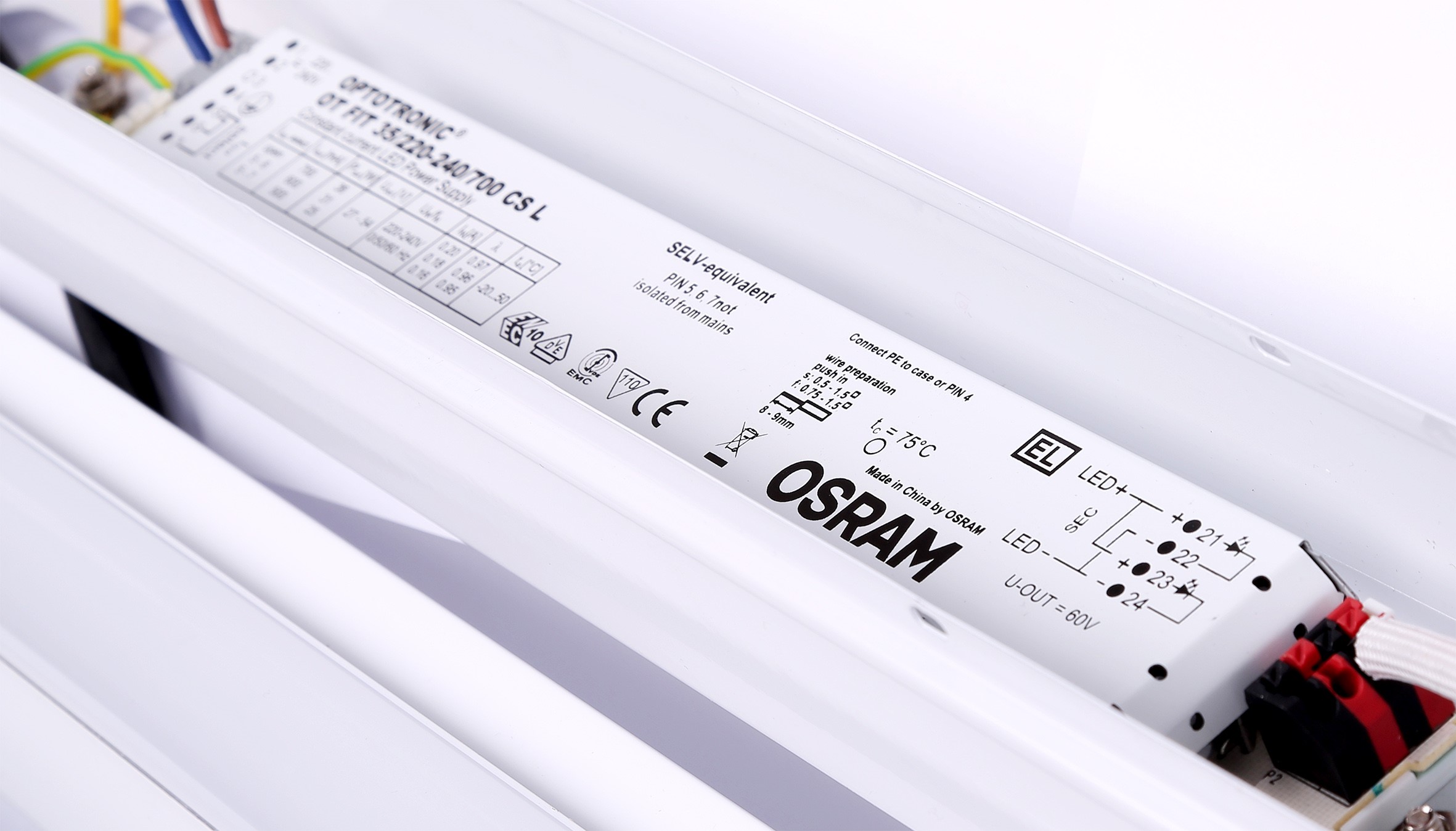There are three main reasons why lights flicker:
1. Flicker caused by external factors. Faults and environmental conditions external to the light fitting that could cause flickering include:
a. Faulty wiring. If you suspect this is the cause of the problem you should consult a qualified electrician.
b. Faulty connections. For example, if an LED lamp is not securely held in the lamp-holder. Usually you will be able to check this for yourself, but if a new lampholder is required you should consult a qualified electrician.

Lamp-holder. This is a GU10 lamp-holder, but there are several other designs in common use.

Lamp
Pins. If the pins are not firmly engaged in the corresponding sockets in the lamp-holder a good electrical connection will not be achieved and flicker could be the result.
c. Overloaded circuits. Usually, if a circuit is overloaded the circuit breaker will trip and the electrical supply to that circuit is cut-off, so flickering would not take place. However, if the circuit breaker is not functioning the consequences are potential highly dangerous and could include flickering, and much more. If you suspect this is the cause of the problem you should consult a qualified electrician.
d. Abnormal fluctuations in the electrical supply, possibly caused by lightning strikes or a tree falling on a power line.
e. Other devices on the same electrical circuit with faults of their own. Disconnecting them one by one will usually reveal if this is the problem and which device is at fault.
f. The wrong type of dimmer. This is a common cause of flickering. Almost all light fittings today (2021) use LEDs as their light source, but there are still many dimmers in use that were designed for other light sources such as tungsten filament lamps. Usually, dimmers designed for these light sources will not work well with LEDs and flickering is often experienced. For more information, please check this article: LED Dimming - Frequently Asked Questions
2. Flicker caused by faults inside the light fitting:
a. Faulty electronics in the light fitting. All LEDs have a driver – which is a piece of electronics that transforms the mains voltage down (typically) from 230V to 12V or 24V and rectifies it from alternating current (AC) to direct current (DC). Over time, drivers gradually fail and this could cause flickering. If the driver is separate from the LEDs (as in the picture below) the manufacturer of the light fitting might be able to supply a replacement.
If the driver and the LEDs are integral to each other (as in an LED lamp, such as the one pictured above), there is no alternative but to replace the lamp.
b. Faulty connection between the driver and LEDs. If the driver is separate from the LEDs (as in most larger and commercial fittings), check the connections between them if you are qualified to do so.

An example of a popular commercial LED light fitting in which the driver and the LEDs are separate.

The driver is inside the fitting but separate from the LEDs.

The LEDs are connected to the driver with small wires. A fault in these connections could cause flickering but can only be rectified by a suitable qualified person.
c. Faulty LEDs. It is rare that flickering is caused by faulty LEDs. Usually, LEDs gradually become dimmer with age, so if they are flickering the cause is more likely to be in the driver (see above) or elsewhere.
3. Flicker that is inherent to the design of the light fitting and is not caused by an external fault, or a particular environmental situation or a progressive deterioration of the light fitting.
To an extent, which may or may not be noticeable to the naked eye, all artificial light sources flicker. This is a matter of debate and concern in the lighting industry because flicker, even at frequencies that we cannot consciously see, is known to affect our health. Further information on this aspect of flicker can be found on the following article What is Flicker in Relation to Lighting?